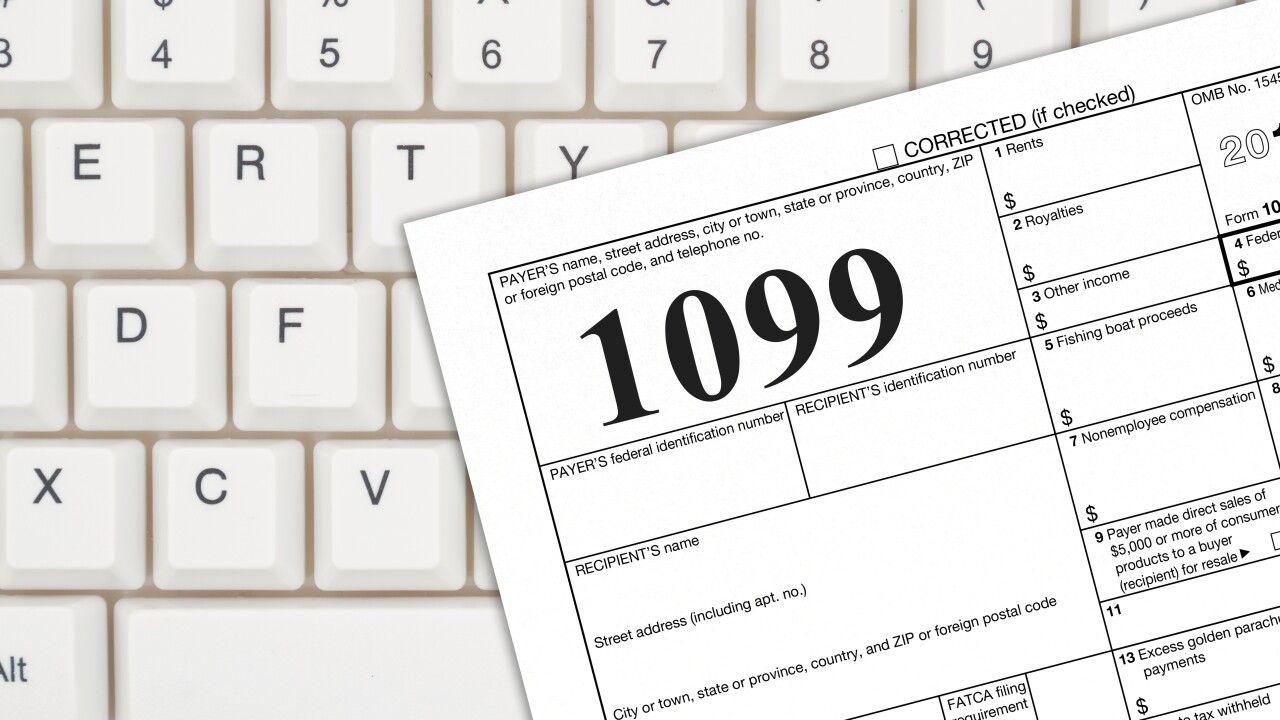In spite of efforts by the Internal Revenue Service to improve taxpayer compliance, the rate at which taxpayers pay their taxes voluntarily and on time has ranged from roughly 81 percent to about 84 percent over the past three decades, according to Michael Brostek, the director of tax issues for the Strategic Issues Team at the Government Accountability Office.The tax gap, measured by figures from the National Research Program's audit data from 2001 to 2004, is the difference between the amounts taxpayers pay voluntarily and on time, and what they should pay under the law.
In an appearance before the Senate Finance Committee Subcommittee on Taxation and IRS Oversight, Brostek noted that each 1 percent reduction in the net tax gap would yield $3 billion annually in additional tax revenue.
Brostek highlighted three major approaches to reducing the tax gap:
* Simplifying or reforming the tax system;
* Providing the IRS additional enforcement authority and tools, such as information reporting and tax withholding, through changes to the tax laws; and,
* Devoting additional resources to enforcement under the existing tax laws.
"Simplification has the potential to reduce the tax gap for at least three broad reasons," Brostek stated. "First, it could help taxpayers to comply voluntarily with more certainty, reducing inadvertent errors by those who want to comply, but are confused because of complexity. Second, it may limit opportunities for tax evasion, reducing intentional noncompliance by taxpayers who can misuse the complex code provisions to hide their noncompliance or to achieve ends through tax shelters. Third, Tax Code complexity may erode taxpayers' willingness to comply voluntarily, if they cannot understand its provisions or they see others taking advantage of complexity to intentionally underreport their taxes."
One form of simplification of the code would be simply to make definitions consistent across code provisions, according to Brostek. For example, the definition of a qualifying post-secondary education expense differs among some provisions, resulting in some preparers including unallowable expenses for books in a recent study of paid preparer services to taxpayers.
The Earned Income Tax Credit is another provision in which complexity may contribute to the individual tax gap, said Brostek, citing an estimated tax loss of up to $10 billion for tax year 1999. "Although some of this noncompliance may be intentional," he said, "we and the National Taxpayer Advocate have previously reported that confusion over the complex rules governing eligibility for claiming the credit could cause taxpayers to fail to comply inadvertently."
A further simplification could be made by eliminating or consolidating tax expenditures, said Brostek, citing the doubling of tax exemptions, exclusions, deductions, credits and deferrals from 1974 through 2005. The IRS's recent estimate of the tax gap includes a $32 billion loss in individual income taxes for tax year 2001 because of noncompliance with these provisions.
Additional tools to help reduce the tax gap in the form of greater withholding and information reporting would help the IRS deal with underreported income, the largest contributor to the tax gap, according to Brostek.
"Tax withholding and information reporting have been shown to lead to high, sustained levels of taxpayer compliance, because the income taxpayers earn is transparent to them and the IRS. Also, using these tools can help the IRS better allocate its resources by improving its ability to identify and prioritize noncompliant taxpayers that it contacts," he said. "For example, we found that having third parties report to taxpayers and the IRS the cost, or basis, of stocks and mutual funds that taxpayers sell could help taxpayers improve their voluntary compliance and help the IRS allocate its enforcement efforts concerning these transactions."
Coming on the heels of Brostek's testimony was a statement by David Walker, comptroller general of the U.S. and head of the GAO, that fundamental reform of the tax system has the potential to reduce the tax gap by billions of dollars.
"The complexity of, and frequent revisions to, the tax system make it more difficult and costly for taxpayers who want to comply to do so and for the IRS to explain and enforce tax laws," he said. "Complexity also creates a fertile ground for those intentionally seeking to evade taxes, and often trips others into unintentional noncompliance. Likewise, the complexity of the tax system challenges the IRS in its ability to administer our tax laws."
How big a gap?
Meanwhile, not everyone agrees with the tax gap numbers.
A recent study by the Treasury Inspector General for Tax Administration raised questions about the reliability of the data used to make tax gap projections. The study concluded that the IRS does not have enough information to completely and accurately assess the overall tax gap.
Closing the tax gap is a theoretical ideal, according to former tax counsel to the Senate Finance Committee George Pieler. "They don't measure it dynamically," he said. "If you take every provision of the tax law, including exemptions and loopholes, and forced 100 percent audit coverage, you can't say there would be no effect on the economy of all the dollars you drained out. There's definitely not a one-to-one gain."
"You can make abstract projections based on the models they use for estimating revenue, but they've been pretty much off the mark in doing that - they failed to project the additional revenue we had as a result of the recent tax cuts, which helped close the gap," Pieler noted.
"The reason tax shelters are created is because there's a lot of creative ambiguity in the tax laws," he continued. "Some of those shelters are clearly abusive and need to be shut down, but many are creative interpretations of what the law says. A tax professional has the obligation to try and save as much money as possible for his client, so there are two sides to the equation."
"You have to look in detail how it's defined," said Larry Hunter, senior research fellow with the Lewisville, Tex.-based Institute for Policy Innovation. "On its own terms, it's defined too narrowly. There's a growing concern by the IRS and other experts that a significant portion of the gap, as much as two-thirds, is due to ignorance, honest errors and confusion over the tax laws."
"As an economist, I look at the gap as being much larger, because they don't consider the biggest component of the gap," he said. "If you look at the tax base and apply the federal tax to it, the proper economic tax base is essentially the same base collected in a different way that you would get with a comprehensive national retail sales tax, a flat tax on wage and capital income, or a value-added tax. All of these taxes are different ways to tax the base the correct way, and if you did, you would get a lot more economic growth, and revenues would go up."
"The complexity of the code is a product of the improper definition of the tax base and all the exceptions they carve out," explained Hunter. "They start with the definition of taxable income, and include capital gains, impose a graduated rate structure, and a depreciation system that fails to reflect economic reality."
"Everyone knows that if they actually imposed the tax the way they define it, it would be devastating," he said. "So they fix it by special rules for capital gains, dividends, investment tax credits, etc. All of these become portrayed as loopholes, but they're really an after-the-fact third or fourth attempt to correct the tax base. It not only creates an impossibly complex system, it creates one that looks unfair, which just invites the politicians to go crazy and further complicate it."
"The current system is so complicated, it really is unfixable," he concluded. "We won't get to where we want unless we start over."
Not ready to begin again
The momentum for a new start to the tax code via fundamental tax reform is growing, but is not yet strong enough to augur reform this year, according to Bill Archer, former chairman of the Ways and Means Committee and currently a senior policy analyst at PricewaterhouseCoopers.
"I believe we should try to get rid of the income tax system, and if that is the result of tax reform, I think we will benefit tremendously," he said in a recent Tax Foundation podcast.
"But, in order to be able to get a new fundamental tax system that is designed to create more savings and more jobs and more economic activity in the United States, you're going to have to have a political base. And right now that political base does not seem to be there," he continued.
"I think it will develop as we see more individuals falling within the net of the alternative minimum tax," he predicted. "Most Americans today are not faced with it, but each year more and more Americans fall under it. And within the next three or four years it's projected that the government will raise more money from the alternative minimum tax than they do from the regular tax on individuals. And I think that will be the catalyst that will bring about a potential base for fundamental tax reform."





